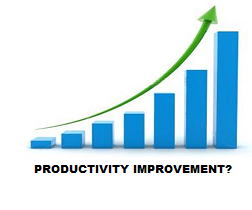A common and logical question often posed by investors in recent months is:
What is driving the stock market?

One possible explanation was covered by BloombergView:
“It’s the puzzle perplexing central bankers, investors and financial writers: How has the U.S. economy accelerated its expansion in recent months without a big drop in unemployment and with core inflation falling? The logical conclusion is that productivity growth has finally picked up, a development with big implications for the economy…Accelerating growth with stable or falling inflation and employment implies that productivity growth is increasing, allowing the economy to do more with less. Companies that want to hire but can’t find workers are simply forced to innovate and invest in labor-saving resources.”
Last Time This Happened, Stocks Moved In A Big Way
This week’s stock market video looks at long-term demographic trends and their possible impact on the stock market.
Bullish Sentiment Remains Below Average
If you monitored the markets closely near the bubble peaks in 2000 and 2007, you know sentiment in the present day is much more skeptical. Bubbles are typically highlighted by irrational optimism, which is not present in this week’s American Association of Individual Investors (AAII) survey. Instead of being wildly optimistic, present day bullish sentiment is below the historical average dating back to 1987.















Leave A Comment